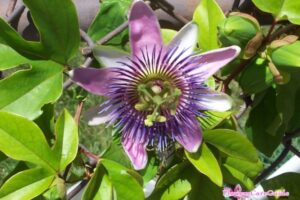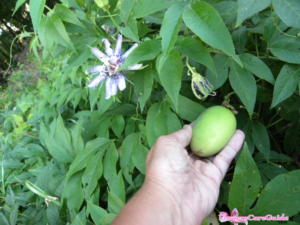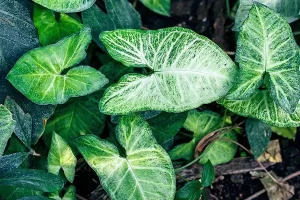Frosty fern, also known as the African Clubmoss, is a naturally grown species of vascular plants. These plants are naturally found in the Azores and also in some parts of the African mainland. The Frosty fern is not a fern. It belongs to the family of Selaginellaceae and in the group of lycopods where it grows in a variety of spike moss. However, it does propagate similarly as fern does, from their spores.
Selaginella frosty fern enhances the beauty of the place wherever you keep them in. These are popular indoor plants that remain green throughout the year and showcase a friendly, lacey, and petite vibe in the room. The plants grow up to 8 inches inside the house. Due to their small size, they do not demand bright sunlight; just indirect sunlight through a curtain would be enough for them to thrive.
Sometimes, frosty fern care can be challenging, but in general, they are low maintenance plants and do not require much time and attention. To solve your problems and clear your all doubts, we have provided you with a complete guide on “how to care for a frosty fern”. Take a look.
How to Care for Frosty Ferns
Light
Frosty ferns do not require direct bright sunlight. They require indirect sunlight filtering from the curtains or colored glass. However, they do demand a good amount of brightness around their shade for proper growth.
Temperature
Frosty ferns best thrive in mild temperatures. They don’t survive in temperatures below 10⁰ C but grow well in an environment where the temperature ranges from 15⁰ C to 25⁰ C. Temperature above 25⁰ C is not recommended for the frosty fern plant.
Water and Humidity
Frosty ferns require more than the normal amount of water for their happy growth. To keep them healthy, you need to water them regularly. During summer, you can water them once or twice a week. Whereas in winter, check the dryness of the soil by inserting your finger 1-2 inches in it, and if it feels dry, then water it.
Also, check if the pot has proper drainage or not. There should be a hole in the bottom of the pot to remove the excess water. Rainwater or the purified water is best for the good growth of frosty ferns.
Along with the good supply of water, frosty ferns require a good amount of humidity in the air, especially in the months of winter when the air gets drier. To increase the humidity, you can use a humidifier in the room or you can also keep a tray of pebbles and water near the plant.
You can also use the plant mister to increase the humidity, but it is advisable not to use it too much as it leads to fungal growth on the foliage.
Soil
The quality of soil is another important factor that we take into consideration when we talk about how to grow a frosty fern. A well-drained soil would be fine for the frosty fern plant which can keep moisture for a longer period. But the soil should not be soggy and its pH should range between 5.5 and 6.
Make sure to use organic soil in the pot because it reduces the need for external feeding of nutrients. A frosty fern thrives well in good quality soil and a good drainage pot system.
Fertilizers for Frosty Fern
If the soil does not have a sufficient amount of nutrients that are required by the selaginella frosty fern, then you can add houseplant fertilizer to it, especially the one that has a good amount of nitrogen.
The fertilizing should be done once a week in the months of summer and twice a week in winters. Every fertilizer is different, so to dilute the fertilizer, follow the manufacturer’s recommendations for the best results. Stop the use of fertilizer if the plant is showing yellow color in its leaves or wilting.
Repotting of Frosty Ferns
Frosty ferns grow continuously until their pot becomes too small to support their further growth. In that case, move the plant into a bigger pot to maintain its regular growth. For continuous growth, choose the next pot which is 2 inches deep and 2 inches wider than the current pot.
Make sure the new pot has a hole for drainage and use quality soil for the plant. Slowly remove the plant from the previous pot and lose the soil that is stuck with the roots. Cut the damaged or rotten roots, if you find any.
Place the plant gently into the new pot, add soil to it and pat it down before watering it. Do not use the fertilizers 4 to 6 months after repotting.
Can frosty ferns be planted outside?
The thing that many people doubt is “can frosty ferns be planted outside or not”? The answer is yes. The frosty fern plant can be planted outside in the warm climate zones, but it requires extra care for its proper growth. The plant does not like bright direct sunlight, so it’s important to plant it under shade. The plant can tolerate the feeble morning sunlight, but it will die in the harsh afternoon sunlight.
The moisture level of the soil should be maintained on the outdoor frosty fern. In the summer, remember to water it 2-3 times in a week when it grows continuously and 1 time in the winter months when it grows slower.
Frosty Fern Propagation
The frosty fern plant’s propagation can be done easily by cutting the stem and pressing it into the soil. However, the stem should be planted into the moist soil and it should be kept in a highly humid environment. Covering the pot with plastic would be a great idea to maintain the humidity.
Best Frosty Fern Species
Emerald Isle
This variety is best for small terrariums because of its green mat color. It is tender, has trail stems, and remains green throughout the year.
Gold Tips
The Gold Tip Frosty Fern is one of the best species. It shows the sign of growth all the time with its light green color at the tips.
Aurea
The Aurea has a bright color and a pattern of stiff branching fingers. The species is also suitable for the terrariums.



